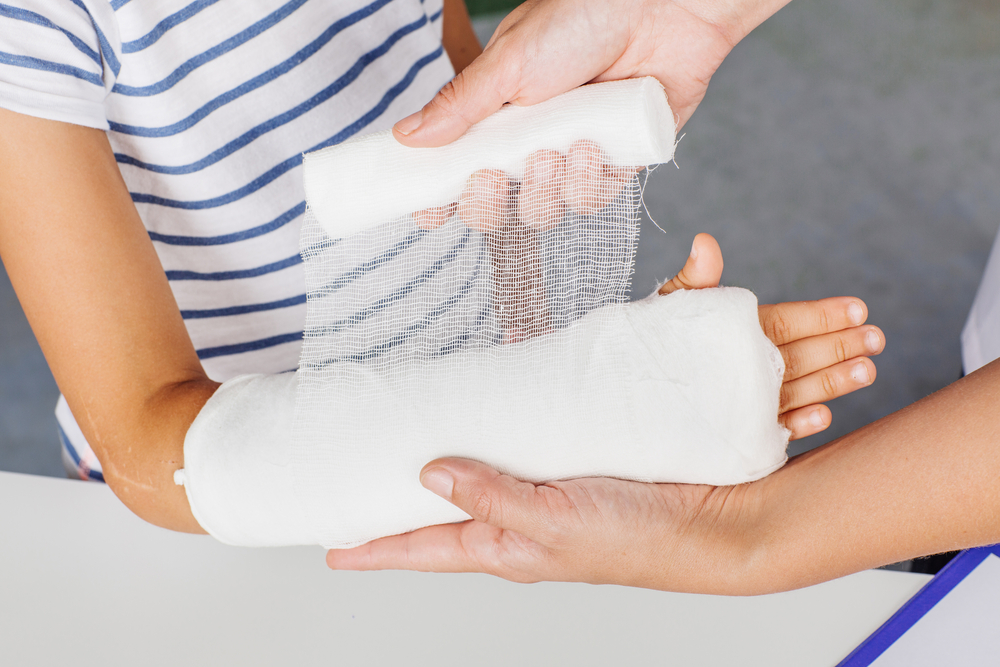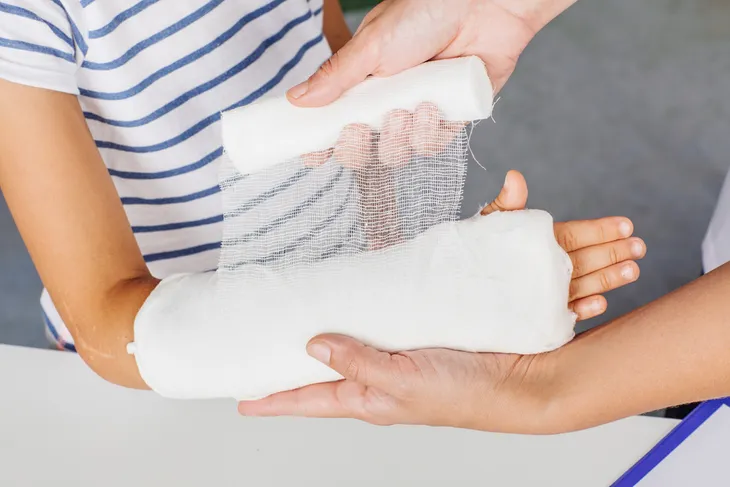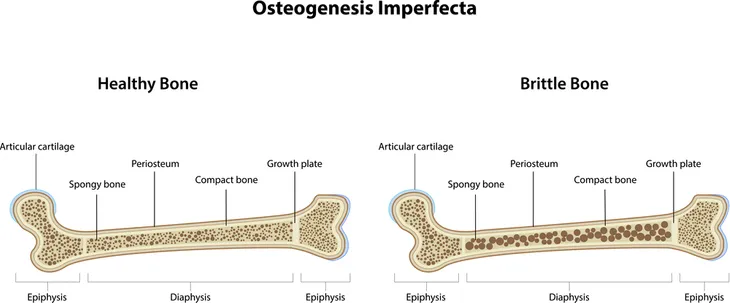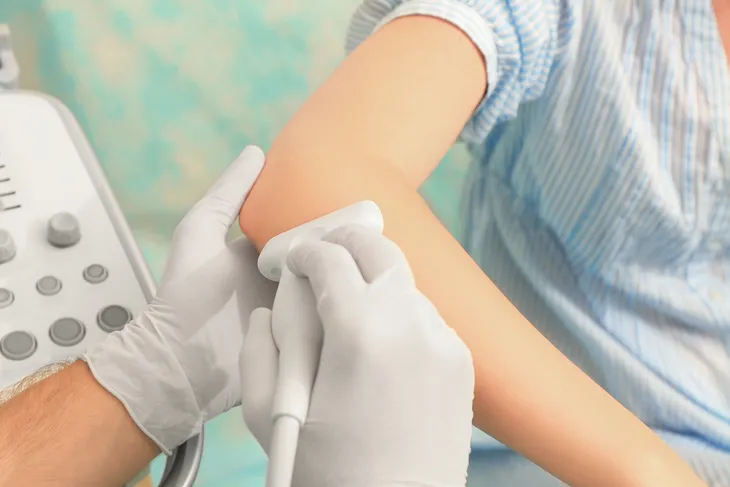Osteogenesis imperfecta (OI), which is also referred to as brittle bone disease, is a disorder where a person’s bones are very fragile, causing them to break easily, oftentimes without cause. It is relatively rare, affecting approximately 1 in 20,000 people, and “occurs with equal frequency among males and females and among racial and ethnic groups,” says the National Human Genome Research Institute.
As it is a genetic condition, OI is typically present at birth, although the severity with which the child experiences the disorder largely depends on the type they have. Let’s take a closer look at these types, as well as the symptoms to expect and what treatment options are available, with these six facts about OI.
Causes
As previously mentioned, OI is a genetic condition. According to Healthline.com, it results due to “a defect, or flaw, in the gene that produces type 1 collagen, a protein used to create bone.” Without a sufficient amount of type 1 collagen, a person’s bones become brittle and can break easily.
While in most cases the defective gene is passed directly from a parent with OI to their child, the American Academy of Orthopedic Surgeons says it is possible for a child to get OI even if neither parent has the condition. “In these cases,” the source says, “the genetic defect is a spontaneous mutation (change) in the gene, and it stops functioning correctly.”
Types
There are four primary types of OI. According to the Cleveland Clinic, type I is the most common, and it is also the mildest form of the disease. The source says that these individuals will often experience “more fractures during childhood than adulthood.” Type II is the most severe form of OI, where fetuses may develop bent or fractured bones while in the womb. As a result, most do not survive birth or, if they do, die shortly after.
With type III, which is also very severe, babies are often born with broken or deformed bones, which Healthline.com says “may get worse as your child gets older.” Type IV can range in severity from mild to severe, but most bones fractures tend to occur before puberty.
Symptoms
Although most symptoms are largely dependent on the type of OI a person has, there are several symptoms that are considered to be quite common. Beyond having fragile bones, the American Academy of Orthopedic Surgeons says these symptoms may include short stature, a triangular-shaped face, breathing problems, hearing loss, brittle teeth, and bone deformities (such as bowed legs or scoliosis).
Healthline.com adds that individuals with OI may experience loose joints, a curved spine (called kyphosis), heart defects, or “a bluish color in the white of the eye.”
Diagnosis
Because the symptoms of OI are very unique in nature, the Osteogenesis Imperfecta Foundation says that the disease is primarily diagnosed “based on the presence of fractures and other clinical features.” Genetic testing may be done to help a physician further confirm this.
With severe types of OI, however, the source says that it is often detected prenatally via ultrasound, which “can detect bowing, fractures, shortening or other bone abnormalities.” Although it may not be possible to detect exactly which type (II or III) the fetus has.
Treatment
Although there is no cure for OI, there are a variety of different treatment options that can help to reduce symptoms and increase quality of life. The National Organization for Rare Disorders says that physical therapy is beneficial for “strengthening muscles, increasing weight-bearing capacity, and reducing the tendency to fracture.” Healthline.com indicates that bisphosphonate medications can help to increase bone strength.
In some cases, however, more intensive treatments may be necessary. These include a surgical procedure called rodding, where metal rods are placed in the child’s bones to prevent breakage. In individuals with severe bone deformities, reconstructive surgery may be required.
Outlook
Because the severity of the condition varies depending on the type of OI a person has, so too does the outlook. With type I, Healthline.com says children “can live a normal life with relatively few problems.” With type II, however, the disorder is typically fatal, either while the child is in utero or shortly after birth.
Due to the severe bone deformities common to people with type III, the source says they will often require wheelchair assistance and “usually have shorter lifespans than people with type I or IV.” With Type IV, although crutches may be needed to assist with walking, individuals have life expectancies that are close to normal.









